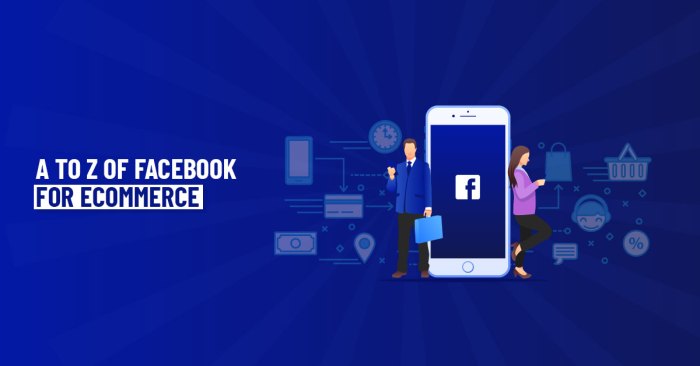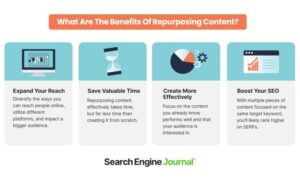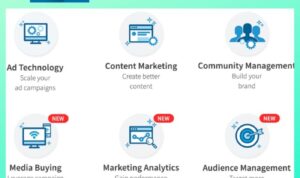Using Facebook for E-commerce kicks off the digital shopping experience with a bang, showcasing the power of social media in the business world. Get ready to dive into the world of online selling like never before!
Introduction to Using Facebook for E-commerce
Using Facebook for E-commerce refers to the practice of selling products or services online through the social media platform. With the rise of digital marketing, businesses have turned to Facebook as a powerful tool to reach a wider audience and drive sales.
Facebook has become a popular platform for E-commerce due to its massive user base and advanced targeting capabilities. Businesses can create targeted ads, engage with customers through posts and messaging, and even set up shop directly on their Facebook page.
Examples of Successful E-commerce Businesses on Facebook
- 1. Wish: Wish is an online marketplace that has seen tremendous success by leveraging Facebook ads to reach new customers and drive sales.
- 2. ColourPop: This cosmetics brand has built a loyal following on Facebook through engaging content and targeted advertising.
- 3. Thrive Market: Thrive Market, an online grocery store, has used Facebook to promote their subscription-based service and attract health-conscious customers.
Setting Up an E-commerce Store on Facebook

Setting up an E-commerce store on Facebook is a great way to reach a wide audience and increase sales. Here’s how you can get started:
Process of Setting Up an E-commerce Store on Facebook
To set up an E-commerce store on Facebook, follow these steps:
- Create a Facebook Business Page if you don’t already have one.
- Go to the “Shop” tab on your Facebook Page and click “Add Shop Section”.
- Set up your shop details, including currency, shipping options, and return policy.
- Add your products to your Facebook shop by uploading photos, descriptions, and prices.
- Manage your inventory and orders directly through Facebook.
Features and Tools Available for E-commerce on Facebook
Facebook offers various features and tools to optimize your E-commerce store, such as:
- Facebook Shop: Display your products in a visually appealing way.
- Checkout on Facebook: Allow customers to purchase directly on Facebook.
- Ads Manager: Run targeted ads to reach potential customers.
- Analytics: Track performance and make data-driven decisions.
- Messenger Integration: Communicate with customers in real-time.
Tips for Optimizing an E-commerce Store on Facebook
To make the most of your E-commerce store on Facebook, consider these tips:
- Use high-quality images and compelling product descriptions to attract customers.
- Engage with your audience through posts, comments, and messages to build relationships.
- Promote your products through Facebook ads to reach a larger audience.
- Regularly update your shop with new products and promotions to keep customers coming back.
- Monitor your analytics to understand what’s working and make adjustments as needed.
Utilizing Facebook Ads for E-commerce

Using Facebook Ads for E-commerce can be a game-changer in boosting your online business. Let’s dive into the benefits, strategies, and tips for effective ad campaigns.
Benefits of Using Facebook Ads for E-commerce
- Wide Reach: Facebook has over 2 billion active users, providing a massive audience for your ads.
- Precise Targeting: You can target specific demographics, interests, behaviors, and even custom audiences for better engagement.
- Cost-Effective: Facebook Ads allow you to set your budget and pay per click or impression, making it suitable for businesses of all sizes.
- Trackable Results: You can measure the performance of your ads in real-time and make adjustments to optimize your campaigns.
Creating Effective Facebook Ad Campaigns for E-commerce
- Define Your Goals: Determine what you want to achieve with your ad campaign, whether it’s increasing sales, driving traffic to your website, or generating leads.
- Compelling Ad Copy and Visuals: Craft engaging copy and eye-catching visuals that resonate with your target audience and compel them to take action.
- A/B Testing: Test different ad copies, visuals, and targeting options to see what resonates best with your audience and drives better results.
- Optimize for Conversions: Use Facebook Pixel to track conversions on your website and optimize your ads for better performance.
Targeting the Right Audience with Facebook Ads
- Custom Audiences: Upload your customer list or website visitors to create custom audiences for retargeting and lookalike audiences for reaching new potential customers.
- Interest Targeting: Target users based on their interests, behaviors, and online activities to reach a relevant audience for your e-commerce products.
- Lookalike Audiences: Create lookalike audiences based on your existing customer data to find similar users who are likely to be interested in your products.
- Location-Based Targeting: Narrow down your audience based on location to target users in specific regions where your e-commerce business operates.
Engaging Customers on Facebook for E-commerce: Using Facebook For E-commerce
In today’s digital age, engaging customers on Facebook is essential for the success of your E-commerce business. Building a strong online community around your brand can create a loyal customer base and boost sales. Let’s explore some strategies to effectively engage customers on Facebook for E-commerce.
Creating Interactive Polls and Surveys
- Use polls and surveys to gather feedback from customers about products, services, or preferences.
- Engage with customers by asking for their opinions on new products or features.
- Offer incentives such as discounts or giveaways to encourage participation.
Hosting Live Q&A Sessions
- Host live Q&A sessions to interact with customers in real-time and address any inquiries they may have.
- Showcase new products, demonstrate how-to guides, or provide behind-the-scenes looks at your business.
- Encourage customers to ask questions and engage with your brand on a personal level.
User-Generated Content Contests
- Encourage customers to create and share content related to your products or brand, such as photos, videos, or reviews.
- Host contests or giveaways for the best user-generated content, showcasing the winners on your Facebook page.
- Build a sense of community and excitement around your brand, while also increasing brand visibility and engagement.
Exclusive Facebook Group for Customers
- Create a private Facebook group for loyal customers to connect, share experiences, and provide feedback.
- Offer exclusive deals, sneak peeks, and personalized content to members of the group.
- Foster a sense of belonging and community among your customers, leading to increased brand loyalty and repeat purchases.
Customer Service and Support on Facebook for E-commerce
Customer service plays a crucial role in the success of an e-commerce business on Facebook. It is essential for building trust with customers, resolving issues promptly, and enhancing the overall shopping experience.
Best Practices for Providing Customer Support through Facebook, Using Facebook for E-commerce
- Respond promptly to customer inquiries and messages to show that you value their time and are committed to providing excellent service.
- Personalize your responses by addressing customers by name and offering tailored solutions to their problems or questions.
- Use a friendly and professional tone in all interactions to maintain a positive brand image and foster customer loyalty.
- Be transparent about any issues or delays, and keep customers informed throughout the resolution process.
- Monitor feedback and reviews regularly to address any negative comments or concerns promptly and professionally.
Tools and Methods for Managing Customer Inquiries Efficiently on Facebook
- Utilize Facebook Messenger to communicate with customers in real-time and provide instant assistance.
- Set up automated responses or chatbots to handle common inquiries and streamline the customer service process.
- Use labels or tags to categorize and prioritize customer messages based on the nature of the inquiry or issue.
- Implement a dedicated customer service team to ensure that all inquiries are addressed promptly and effectively.
- Track and analyze customer interactions to identify trends, improve response times, and optimize the overall customer support strategy.





